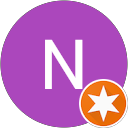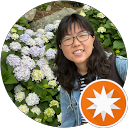Discovering Muniransay Pagoda: A Glimpse into Khmer Culture in Cần Thơ
Muniransay Pagoda (Chùa Khmer Muni-Ransay) stands as a vibrant and stunning cultural symbol in Cần Thơ, representing the spiritual heart of the local Khmer community. Its glittering golden façade and distinctive architecture immediately capture the attention of passersby on the busy Hòa Bình Boulevard. This sacred place provides visitors with a peaceful retreat and a deep appreciation for the rich culture of the Khmer people in the Mekong Delta.
Address: 36 Đ. Hoà Bình, Tân An, Ninh Kiều, Cần Thơ, Vietnam.
I. History and Religious Context
The history of Muniransay Pagoda dates back to the mid-20th century. The Khmer community initially built the temple in 1948 using simple materials like bamboo and thatch.
Meaning of the Name: The temple’s Khmer name, Munirăngsây, translates to “Shining Gem,” reflecting its status as a beautiful and sacred site.
Official Inauguration: Construction of the main hall began in 1964, but the complete complex, including the towering gate, only achieved its grand, present-day form and official inauguration in 1988 after decades of renovation.
Theravada Buddhism: Unlike the Mahayana pagodas found in the city (like Phat Hoc Pagoda across the street), Muniransay adheres to Theravada Buddhism, focusing its worship primarily on Buddha Shakyamuni. It also serves as the headquarters for the Association of United Buddhist Monks in Cần Thơ.

II. Distinctive Khmer Architecture
The pagoda’s magnificent architecture immediately draws visitors, bearing a strong resemblance to the famous Angkorian style of Cambodia. Its vibrant golden color dominates the complex, symbolizing prosperity and good fortune in Khmer culture.
The Gate: The eye-catching entrance features a three-tower gate, stylized after the towers of Angkor Wat, creating an aura of solemnity and grandeur.
The Main Hall (Chánh Điện): The elevated Main Hall protects the main altar and sacred Buddha statues. Murals vividly cover the interior walls, depicting scenes from the life and teachings of the Buddha.
Ornate Sculptures: Intricate carvings adorn the exterior walls, featuring mythological figures like the celestial nymph Keynor, the mythical bird Krud, the demon Yeak, and Reahu, which reflect a blend of Buddhist and Hindu mythological elements. The central grounds also contain a large reliquary tower (Tháp Xá Lợi).

III. Culture, Festivals, and Visitor Tips
Muniransay Pagoda remains a cultural epicenter, offering insights into Khmer traditions.
Major Festivals: The temple organizes several important traditional Khmer festivals annually. These include Chol Chnam Thmay (Khmer New Year), Ok Om Bok (Moon Worship), and Donta (Ancestor Worship). Visiting during these periods guarantees a vibrant cultural experience, complete with traditional music and dance.
Monks and Community: Visitors often encounter friendly monks, providing a chance to learn about their studies and life. The pagoda also frequently hosts cultural activities and folk games.
Operating Hours: The pagoda generally welcomes guests from around 7:30 AM to 8:00 PM daily. We advise checking locally before a late visit.
Entrance Fee: Admission is free for all visitors.
Etiquette: Visitors must dress modestly, covering their shoulders and knees, and should remove their shoes before entering the Main Hall. They should also maintain a respectful and quiet demeanor on the temple grounds.
Contact: We recommend using the provided address for navigation: 36 Đ. Hoà Bình, Tân An, Ninh Kiều, Cần Thơ, Vietnam.




